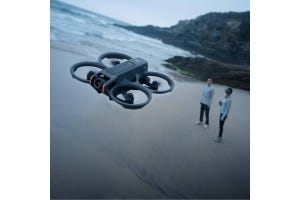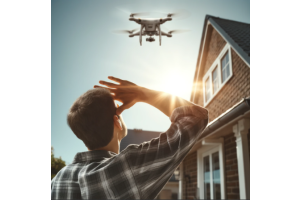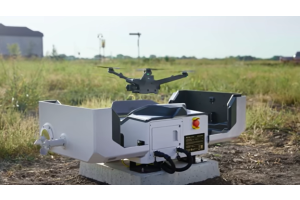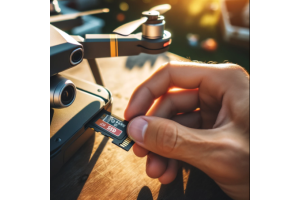Drones have been an asset for survey and mapping tasks for years. No doubt about that. Flying through swathes of land within a fraction of time that would take other methods like theodolites and leveling staff. Post-collection, the model editing phase can become a bottleneck. That’s where the headaches begin. Surveyors find themselves swamped by imperfections in 3D models, where even the smallest inaccuracies can threaten the very integrity of vital projects from urban planning, or emergency responses.
Structures like bridges and power lines demand pixel-perfect attention to detail. Reflective water surfaces can skew sensor readings and distort data accuracy. Lengthy processing times, inefficient collaboration due to lack of cloud-sharing capabilities, dealing with textural defects or removing misplaced parts – things can get hectic. The challenges don't stop there. What of those cases where you’re dealing with high-quality and lower-quality models, and need editing tools that can work across them? Or else you’re faced with even more work on your plate. The newly released DJI Modify aims to deal with such issues.
Here are 5 benefits it has for surveying workflows.
1. Streamlined Integration with DJI Terra
DJI Terra is already known as an easy-to-use mapping software, including automatically generating 2D and 3D maps. DJI Modify comes in to further process and clean up the models generated by DJI Terra. It bridges efficiency gaps, and you can import 3D models directly from DJI Terra with just one lick. You get a smooth transition between data collection and editing.
2. Automatic Generation of Editable Files
You can also automatically generate editable files from DJI Terra projects. This includes pre-identified objects and pre-processing of the model. You just have to enable DJI Modify in DJI Terra. Not only does it save time but it also ensures that the data is ready for immediate for the model editing, without you having to jump through hoops with complex setups or manual interventions.
3. Versatile Editing Tools
When it comes to editing tools, the software is PACKED – kind of like using Photoshop to work on images. Some of the notable ones include:
· Vehicle Flattening and Texture Repair: With just a click on the Vehicle button, the software identifies and selects vehicles in the current view, for you to flatten those vehicle meshes. The subsequent texture smoothing in these areas ensures that repairs are effective and aesthetically pleasing.
· Polygon Select: This feature makes it considerably easier to refine irregular regions of the model. It’s particularly beneficial for those detailed editing tasks as you can to repair textures within a polygonal selection.


· Erase function: Match and repair selected areas with the surrounding patterns. This leads to fast and authentic texture repairs, crucial for maintaining the integrity of the model. Similarly, with the Clone tool you select a pattern within a specific area and drag it to the area needing repair. This results in a smooth effect, blending the pattern edges with the surrounding region.
· Hole Fill: Automatically identifies holes in the model, outlining and highlighting the contours to eliminate manual work. With options like Frame/Click Select, Custom Select, and One-Click Fill, users can efficiently and precisely edit complex, hard-to-identify holes within the model.
· Water Surface Repair: You can create and adjust the water surface on the model, altering the range, height, shape, and position as needed. The software swiftly generates a smooth water surface, either using texture patterns or a chosen custom color, optimizing the repair of water scenes.


5. Real-time Synchronization and Preview
The widespread nature of survey work means you will occasionally be faced with different model qualities. DJI Modify’s got you covered here as well. It distinguishes between high-quality models, typically in ply or OBJ formats, used for detailed adjustments, and low-quality models, often in B3DM or OSGB formats, used for large-region adjustments like floating parts removal and water surface repair.
Changes made in either the high- or low-quality models can be synchronized across both in real-time, ensuring that edits are consistently reflected regardless of the model type. That way you can maintain the accuracy and integrity of the model throughout the editing process. It’s just like the film industry. All changes are accurately reflected in the final output, regardless of the model's quality.
Also Read: Review Of The Best 9 GIS Mapping And Survey Drones for 2024
5. Advanced Model Processing Capabilities
What’s that they say….don’t just work hard – work SMART. Well, DJI Modify speeds things up along with features like its intelligent auto-repair function. It supports a variety of the editing tasks mentioned above, including flattening, texture repairs, water surface repairs, removing floating parts, and filling holes. You can opt for automatic or manual control over these repairs, giving you more flexibility depending on the project's requirements your level of expertise.
Then there is the Live 3D Model Editing. You can simultaneously display high and low-quality models in a single interface, with the capability to edit both. This dual-model display allows users to immediately preview changes, significantly enhancing editing efficiency and accuracy. Such simplify the previously manual and time-consuming process of 3D model editing, gives you more precision, and opens up room for more creativity.
Modeling From Highways to Highrises
The value of these DJI Modify’tools cuts across the board. For instance, transportation authorities can use them to accurately model and assess road conditions, bridge integrity, and railway systems. The software’s ability to quickly flatten surfaces and repair textures aids in creating highly accurate and detailed models of everything from highways to bridges, essential for planning, maintenance, and safety assessments.
For public safety and emergency response, DJI Modify’s quick rendering and cloud sharing capabilities enable rapid sharing of 3D models of disaster-stricken areas or accident scenes, facilitating quicker and more informed decision-making during emergencies. Multiple parties can view the models through the link provided – and not need to download the software. And with the intuitive editing tools, the agencies involved can create detailed and accurate models of complex scenes, which are crucial for strategizing rescue operations and ensuring the safety of both the public and first responders.
Urban planners and architects on the other hand are using DJI Modify to create detailed and realistic 3D models of cityscapes and buildings. The software’s capacity for precise editing and texture repairing helps in creating highly accurate representations of the target areas.
The ability to generate accurate 3D models of power lines, wind turbines, and solar panels for the energy sector simplifies the inspection process, ensuring better maintenance and quicker identification of potential issues. The software’s advanced model processing capabilities, including the elimination of floating parts and hole filling, are instrumental in creating detailed models of complex infrastructures.
Price Tag
So, how much will it cost you? For professionals and businesses seeking a long-term solution, you can get it at a standard rate of $1,580 from authorized dealers. However, DJI understands that one size doesn't fit all, plus this is a new product in the market and many are not familiar with it. As such, the brand has rolled out a free 6-month public beta license. That way, whether you're just dipping your toes in or you're a seasoned pro, you can explore the capabilities of DJI Modify without immediate financial commitment.





